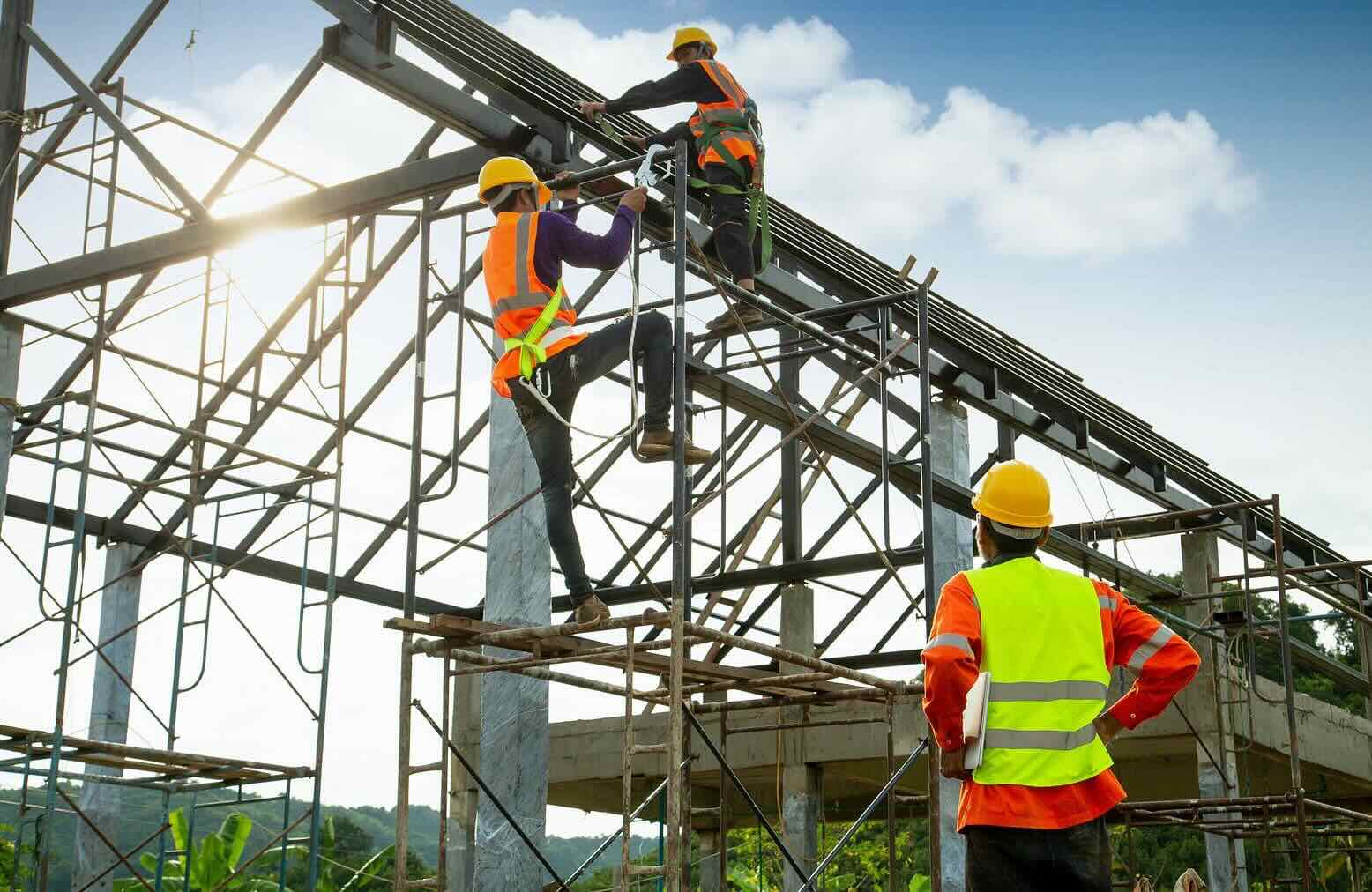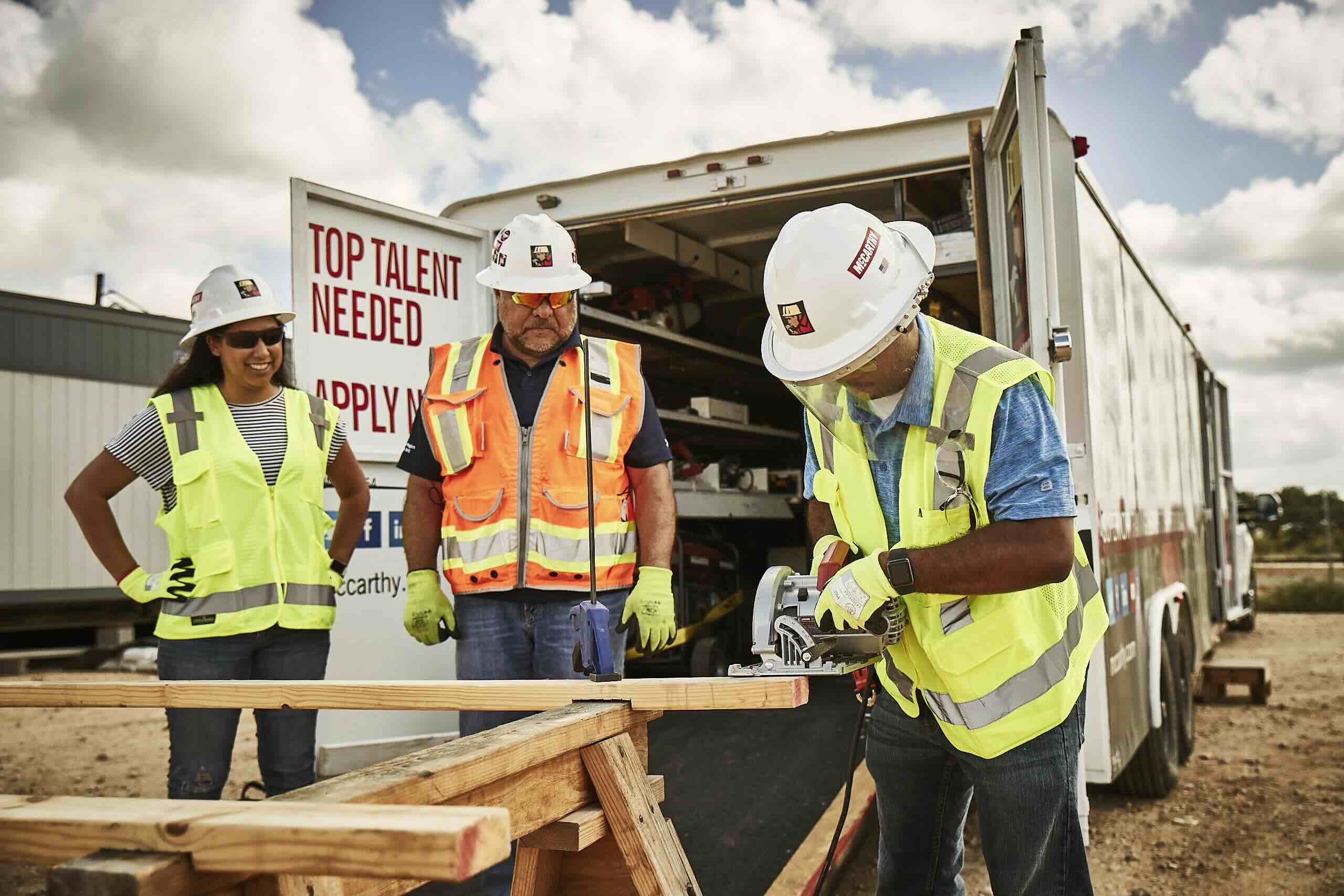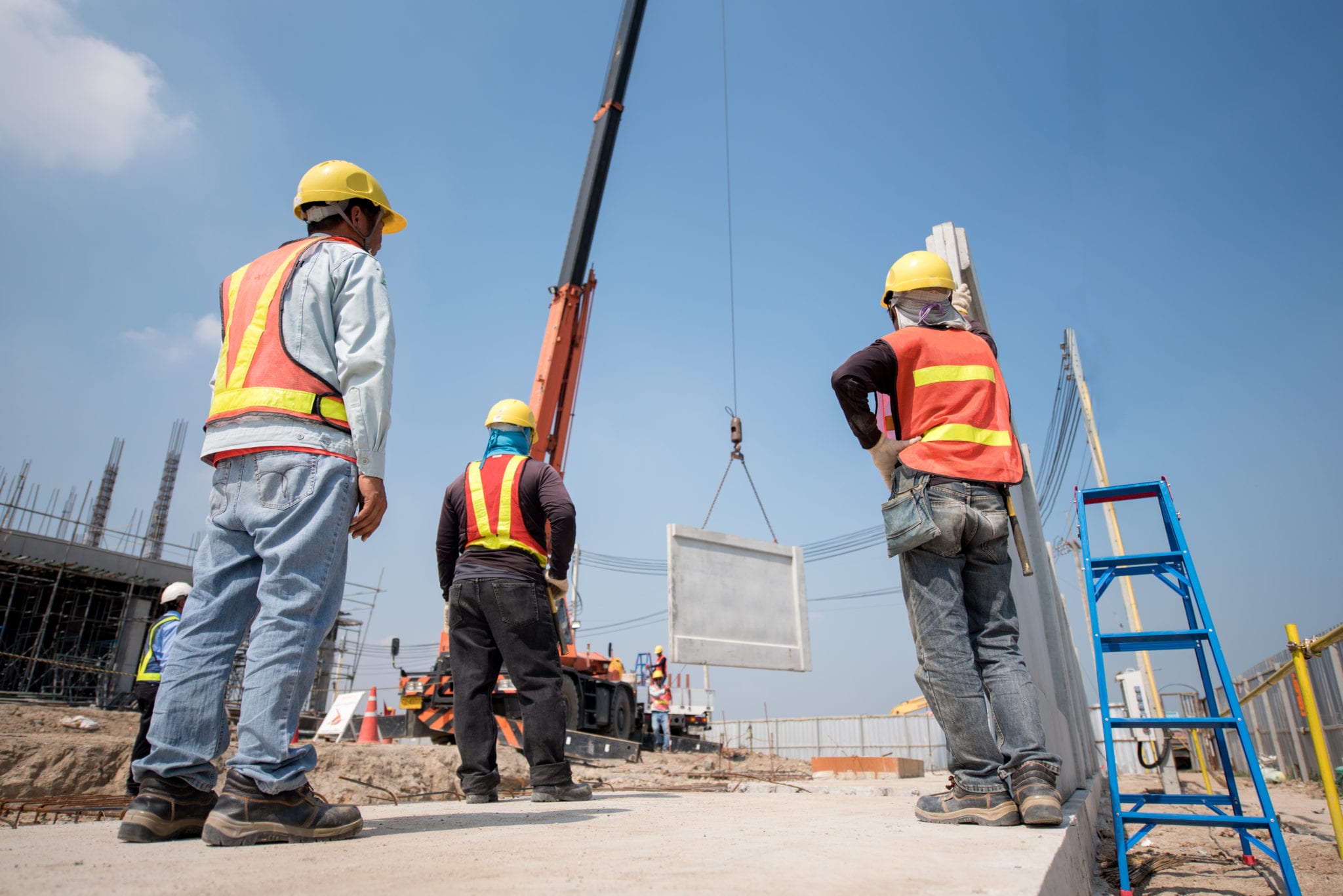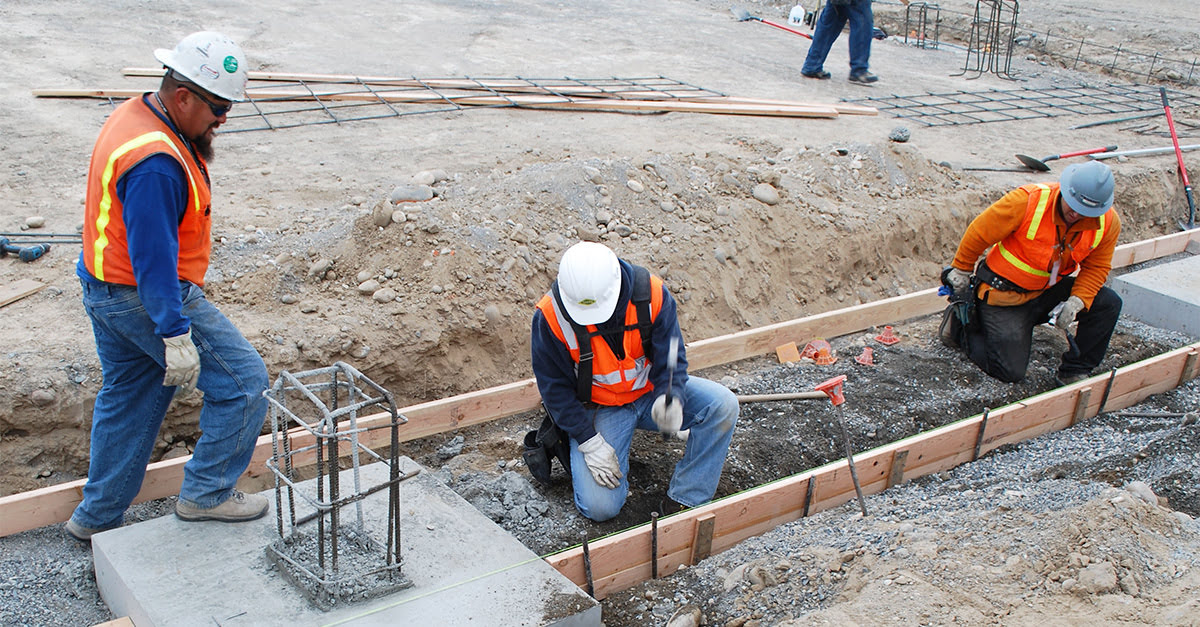Home>diy>Building & Construction>How Does Construction Bonding Work


Building & Construction
How Does Construction Bonding Work
Modified: January 9, 2024
Learn how construction bonding works in the building construction industry. Understand the importance and benefits of bonding for successful project completion.
(Many of the links in this article redirect to a specific reviewed product. Your purchase of these products through affiliate links helps to generate commission for Storables.com, at no extra cost. Learn more)
Introduction
Welcome to the world of construction bonding! If you’re involved in the building industry, or even just curious about the intricacies of construction projects, then understanding how construction bonding works is essential knowledge. Construction bonding plays a crucial role in ensuring the success and completion of construction projects, providing financial security to all parties involved.
So, what exactly is construction bonding? In simple terms, it is a financial guarantee that ensures contractors fulfill their contractual obligations, covering any potential losses incurred by the project owner or other stakeholders in case the contractor fails to deliver as agreed.
Construction bonding serves as a safeguard against potential risks and uncertainties in the construction industry. It not only protects the project owner’s interests but also provides reassurance to subcontractors, suppliers, and other parties involved in the project.
Throughout this article, we will delve deep into the world of construction bonding, uncovering its types, how it works, the role of surety companies, the benefits it offers, and the process of obtaining construction bonds. By the end, you’ll have a comprehensive understanding of this vital aspect of the construction industry.
So, let’s begin our journey into the world of construction bonding and discover how this critical financial mechanism contributes to the success and reliability of construction projects.
Key Takeaways:
- Construction bonding provides financial security, promotes contractor reliability, and mitigates risks in construction projects. It ensures project completion and fosters trust among stakeholders, benefiting project owners, contractors, and subcontractors.
- Surety companies play a crucial role in evaluating contractors, issuing bonds, and monitoring project performance. Understanding the bonding process and key terms is essential for effective communication and successful project management in the construction industry.
Read more: How Does A Bond Work In Construction
Definition of Construction Bonding
Before we dive into the details, let’s start by defining what construction bonding is. Construction bonding, also known as surety bonding, refers to a contract between three parties: the project owner, the contractor, and the surety company.
This contract stipulates that the contractor must complete the project as per the agreed-upon terms and conditions outlined in the construction contract. If the contractor fails to fulfill their obligations, the surety company steps in to provide financial compensation to the project owner or other affected parties.
Construction bonding essentially acts as a guarantee that the project will be completed, even if the contractor faces financial issues or fails to deliver on their commitments. It ensures that the project owner is protected and provides a sense of security to all stakeholders involved.
It’s worth mentioning that construction bonding is not an insurance policy. While both insurance and bonding provide financial protection, they serve different purposes. Insurance protects against unforeseen events and accidents, while construction bonding focuses on ensuring the successful completion of a project.
Construction bonding is commonly required for public construction projects, such as government infrastructure projects, as well as for large-scale private projects. It is an essential aspect of construction industry regulations, contributing to the overall integrity and success of construction projects.
Now that we have a clear understanding of what construction bonding entails, let’s explore the different types of construction bonds that are used in the industry.
Types of Construction Bonds
Construction bonds come in various forms, each serving a specific purpose within the construction industry. Let’s take a closer look at the most common types of construction bonds:
- Bid Bond: A bid bond is typically required during the bidding process for a construction project. It guarantees that the contractor, if awarded the project, will enter into a contract and provide the necessary performance and payment bonds.
- Performance Bond: A performance bond ensures that the contractor fulfills their obligations as stated in the construction contract. It provides financial protection to the project owner in case the contractor fails to complete the project or does not meet the designated quality standards.
- Payment Bond: A payment bond guarantees that the contractor will pay their subcontractors, suppliers, and laborers for work and materials provided on the project. It ensures that all parties involved in the construction process receive their due compensation, even if the contractor faces financial difficulties.
- Maintenance Bond: Also known as a warranty bond, a maintenance bond provides coverage for a specified period after the project’s completion. It guarantees that the contractor will rectify any defects or issues that arise during the maintenance period.
- Subdivision Bond: A subdivision bond is required when a contractor or developer is involved in dividing a property into lots or parcels for sale. It serves as a guarantee that the developer will complete the necessary improvements, such as roads, utilities, and drainage systems, in the subdivision.
- Supply Bond: A supply bond ensures that suppliers will provide the necessary materials and equipment for a construction project as outlined in their contract. It safeguards the project owner from any potential disruptions due to the non-delivery of essential supplies.
- Environmental Bond: An environmental bond is specifically required for projects that involve potential environmental risks. It provides assurance to regulatory authorities and the public that the contractor will comply with environmental regulations and remediate any environmental damage caused during the construction process.
These are just a few examples of the various types of construction bonds available. The specific bond requirements may vary depending on the project’s size, nature, and governing regulations. Understanding these different types of bonds is essential for contractors, project owners, and other stakeholders in the construction industry.
Now that we have explored the types of construction bonds, let’s move on to understanding how construction bonding works in practice.
How Construction Bonding Works
Now that we have a clear understanding of the different types of construction bonds, let’s delve into how construction bonding works in practice. The process involves multiple steps and parties working together to ensure the successful completion of a construction project.
Here is a breakdown of how construction bonding works:
- The Bid Process: During the bidding process, contractors interested in a construction project submit their proposals, including bid bonds. The bid bond ensures that the contractor, if awarded the project, will enter into a contract and provide the necessary performance and payment bonds.
- Contract Award: Once the project owner selects a contractor, they enter into a contract that outlines the terms, conditions, and specifications of the project. This contract includes the requirement for the contractor to obtain the necessary construction bonds.
- Bond Application: The contractor applies for the required construction bonds from a surety company. The application typically involves submitting financial statements, project details, and other relevant documentation for evaluation.
- Underwriting: The surety company performs a thorough evaluation of the contractor’s financial strength, experience, track record, and ability to complete the project. This evaluation helps determine the contractor’s bonding capacity and the associated bond premiums.
- Bond Issuance: Once the surety company completes its underwriting process and approves the bond application, they issue the required construction bonds to the contractor. The construction bonds are typically provided in the form of legal documents.
- Project Execution: The contractor proceeds with the construction project, following the terms and conditions outlined in the contract. They are responsible for meeting project milestones, delivering quality work, and adhering to industry standards and regulations.
- Bond Claims: In the event that the contractor fails to meet their obligations, such as non-payment to subcontractors, project delays, or subpar workmanship, the project owner or other affected parties can make a claim against the construction bond.
- Surety Company Response: When a bond claim is filed, the surety company investigates the claim to determine its validity. If the claim is legitimate, the surety company compensates the project owner or affected parties up to the bond’s limit. The contractor is then responsible for reimbursing the surety company for the paid amount.
- Contractor Responsibility: The contractor, under the terms of the construction bond, is responsible for reimbursing the surety company for any claims paid out. The contractor’s failure to do so can result in legal consequences, such as loss of bonding capacity, damage to their reputation, or actions taken against their assets.
By following this process, construction bonding ensures that the project owner is protected and that funds are available to cover potential losses if the contractor fails to meet their obligations. It instills confidence and trust among all parties involved in the construction project.
Next, let’s examine the role of surety companies in the construction bonding process and the benefits that construction bonding offers to stakeholders in the industry.
The Role of Surety Companies
Surety companies play a crucial role in the construction bonding process. They act as a bridge between the project owner and the contractor, providing financial security and assurance that the contractor will fulfill their contractual obligations. Let’s take a closer look at the role of surety companies in construction bonding:
1. Evaluating Contractor Eligibility: Surety companies carefully evaluate contractors before issuing construction bonds. They assess factors such as the contractor’s financial stability, experience, track record, and ability to complete the project. This evaluation helps ensure that only qualified and reliable contractors receive bonding support.
2. Providing Financial Backing: Surety companies provide a financial guarantee to the project owner and stakeholders involved in the construction project. They reassure parties that if the contractor fails to fulfill their obligations, the surety company will step in and provide compensation, up to the bond’s limit.
3. Investigating Claims: In case of a bond claim, surety companies thoroughly investigate the claim to determine its validity. They work closely with all parties involved and assess the damages or losses incurred. This investigation helps ensure that fair and appropriate compensation is provided, protecting the interests of the project owner and affected parties.
4. Defending Contractors: Surety companies also play a role in defending contractors against unjust or false bond claims. They carefully review the claims made and, if necessary, provide legal representation and support to protect the contractor’s rights. This helps maintain fairness and integrity in the construction bonding process.
5. Monitoring Contractor Performance: Surety companies continuously monitor the performance of contractors throughout the duration of the construction project. They ensure that the contractor meets their contractual obligations, adheres to quality standards, and completes the project within the agreed-upon timeframe.
6. Assisting in Contractor Selection: Surety companies’ evaluation process helps project owners select qualified and trustworthy contractors for their construction projects. By partnering with reputable surety companies, project owners can have confidence in their choice of contractor and reduce the risk of project delays or failures.
The role of surety companies is vital in maintaining the integrity and reliability of construction projects. Their involvement provides financial security, mitigates risks, and ensures that construction projects are carried out successfully, benefiting all stakeholders involved.
Now that we understand the role of surety companies, let’s explore the benefits that construction bonding offers to different parties in the construction industry.
When seeking construction bonding, it’s important to have a strong financial history and a good track record of completing projects on time and within budget. Building a solid relationship with a surety company can also help improve your bonding capacity.
Read more: How Does A Bond Work For Construction
Benefits of Construction Bonding
Construction bonding offers a range of benefits to various stakeholders in the construction industry. From project owners to contractors and subcontractors, let’s explore the advantages that construction bonding provides:
1. Financial Security: One of the primary benefits of construction bonding is the financial security it offers. Project owners are protected against potential losses if the contractor fails to fulfill their obligations. It ensures that funds are available to cover damages, delays, or non-payment, providing peace of mind throughout the construction project.
2. Contractor Reliability: Construction bonding serves as a testament to a contractor’s reliability and commitment to their work. It demonstrates that they have undergone a thorough evaluation process by a surety company and have met certain criteria, giving project owners confidence in their selection. This fosters trust and enhances the reputation of the contractor in the industry.
3. Access to Larger Projects: Construction bonding enables contractors to take on larger and more lucrative projects. Many public and private projects require contractors to obtain construction bonds to ensure their financial capability and guarantee project completion. Having bonding capacity allows contractors to compete for these projects, expanding their business opportunities.
4. Risk Mitigation: Construction projects involve inherent risks, such as project delays, non-payment issues, or subcontractor disputes. Construction bonding helps mitigate these risks by ensuring that the surety company steps in to resolve potential problems. This shared responsibility minimizes the impact of unforeseen circumstances on the project owner and provides a mechanism to address any issues that arise.
5. Protection for Subcontractors and Suppliers: Construction bonding extends beyond the project owner’s protection. It also safeguards subcontractors and suppliers by ensuring they receive payment for their work and materials. If the contractor fails to pay them, they can make a claim against the payment bond, reducing the risk of non-payment and enhancing collaboration among project stakeholders.
6. Enhanced Project Quality: Construction bonding promotes higher quality standards in construction projects. Contractors are incentivized to deliver quality workmanship, meet project specifications, and adhere to industry standards to avoid bond claims. This focus on quality ensures that the final product meets or exceeds expectations, benefiting the project owner and end-users.
7. Legal Protection: Having construction bonds in place provides legal protection for all parties involved. It establishes clear expectations and obligations in the construction contract, reducing the chances of misunderstandings or disputes. In case of conflicts, the bond and the surety company’s involvement provide a structured process for resolution.
Overall, construction bonding offers a wide range of benefits, including financial security, contractor reliability, risk mitigation, and legal protection. It is an essential tool for ensuring successful and well-managed construction projects.
Now that we have explored the benefits of construction bonding, let’s take a look at the factors that surety companies consider when evaluating contractors for bonding.
Factors Considered by Surety Companies
When evaluating contractors for construction bonding, surety companies take several factors into consideration. These factors help determine the contractor’s bonding capacity and the associated bonding premiums. Let’s explore the key factors that surety companies consider:
1. Financial Stability: Surety companies assess the financial stability of the contractor to ensure that they have the financial resources to complete the project. They evaluate the contractor’s financial statements, including balance sheets, income statements, cash flow, and working capital. A strong financial position indicates the ability to handle potential project challenges and honor financial obligations.
2. Track Record and Experience: Surety companies consider the contractor’s track record and experience in the industry. They review the contractor’s past projects, including their successful completion, adherence to schedules, and quality of workmanship. Contractors with a proven history of delivering successful projects are viewed as lower risk by surety companies.
3. Management and Key Personnel: The expertise and capabilities of the contractor’s management team and key personnel are evaluated. Surety companies assess their experience, qualifications, and ability to handle complex projects. A well-experienced and competent team indicates strong leadership and project management skills.
4. Bonding History: Surety companies consider the contractor’s bonding history, including any previous bond claims or defaults. A clean bonding history demonstrates the contractor’s commitment to fulfilling their obligations and managing risks effectively. Contractors with a history of successful bond performance are seen as more reliable by surety companies.
5. Workload and Capacity: Surety companies evaluate the contractor’s workload and capacity to take on additional projects. They assess the contractor’s current project commitments and their ability to manage multiple projects simultaneously. Contractors should have the necessary resources, manpower, and equipment to handle the workload without compromising the quality or timeliness of projects.
6. Industry Reputation: Surety companies consider the contractor’s reputation in the industry. They look at the contractor’s relationships with subcontractors, suppliers, and other stakeholders. A strong reputation signifies a history of fair dealings, ethical business practices, and a commitment to delivering quality work.
7. Licensing and Certifications: Surety companies confirm that the contractor holds the required licenses and certifications to carry out construction work in the relevant jurisdiction. Valid licenses and certifications demonstrate compliance with industry regulations and legal requirements.
8. Risk Management and Safety Measures: Surety companies assess the contractor’s risk management practices and safety measures. They review safety records, accident prevention programs, and insurance coverage to ensure that the contractor has appropriate measures in place to protect the project, workers, and the public from potential hazards.
These factors provide surety companies with a comprehensive understanding of the contractor’s capabilities, financial strength, and track record. It helps them determine the contractor’s bonding capacity and set the bonding premiums that align with the associated risks.
Now that we understand the factors that surety companies consider, let’s explore the process of obtaining construction bonds.
The Process of Obtaining Construction Bonds
Obtaining construction bonds is a crucial step for contractors to demonstrate their financial capacity and commitment to fulfilling their contractual obligations. The process involves several steps, including application, underwriting, and issuance. Let’s dive into the process of obtaining construction bonds:
1. Application: The contractor begins the process by submitting an application for construction bonds to a surety company. The application typically includes the contractor’s financial statements, project details, work history, resumes of key personnel, and other relevant documentation as required by the surety company.
2. Financial Evaluation: The surety company performs a thorough evaluation of the contractor’s financial strength. This evaluation includes an analysis of the contractor’s financial statements, such as balance sheets, income statements, cash flow, and working capital. The surety company assesses the contractor’s ability to handle the project’s financial requirements and any potential risks.
3. Underwriting: The underwriting process examines various aspects of the contractor’s qualifications and track record. This includes reviewing the contractor’s experience, project history, bonding history, management capabilities, safety record, and reputation. The surety company evaluates the contractor’s overall risk profile and determines the bonding capacity and associated premiums.
4. Bond Issuance: If the contractor meets the surety company’s requirements, the surety company issues the construction bonds. The bonds are legal documents that outline the terms and conditions, as well as the amount and limits of coverage provided by each bond. The contractor will receive these bonds, which can be submitted to project owners as proof of bonding.
5. Bond Renewal and Maintenance: Construction bonds typically have a specific term, often matching the duration of the construction project. However, for longer projects, surety companies may require an annual renewal to ensure the contractor’s ongoing eligibility and financial stability. Contractors are also responsible for maintaining their bonding capacity by demonstrating ongoing financial health and fulfilling their bonding obligations.
6. Continued Monitoring: Throughout the construction project, the surety company continues to monitor the contractor’s performance and financial stability. This ensures ongoing compliance with the terms of the bond and helps mitigate any potential risks that may arise during project execution.
It’s important for contractors to maintain open communication and transparency with their surety company during the bond process. This includes promptly providing any requested financial updates, project updates, or changes that may impact the bond.
By following this process, contractors can obtain construction bonds and demonstrate their financial capability and commitment to project owners, reducing risk and building trust within the industry.
Now that we understand the process of obtaining construction bonds, let’s explore some common terms and concepts related to construction bonding.
Common Terms and Concepts Related to Construction Bonding
When it comes to construction bonding, there are several key terms and concepts that are important to understand. Familiarizing yourself with these terms will help you navigate the world of construction bonding more effectively. Let’s explore some common terms and concepts related to construction bonding:
1. Obligee: The obligee is typically the project owner or the party who requires the contractor to obtain a construction bond. The obligee is the beneficiary of the bond and is protected if the contractor fails to fulfill their contractual obligations.
2. Principal: The principal is the contractor who obtains the construction bond. They are the party responsible for fulfilling the terms and conditions outlined in the contract and the bond agreement.
3. Surety: The surety is the company that issues the construction bond and guarantees the contractor’s performance and financial obligations. They are financially responsible for compensating the obligee in case the contractor fails to meet their obligations.
4. Bond Premium: The bond premium is the cost paid by the contractor to the surety company for issuing the construction bond. It is usually a percentage of the bond amount and is based on the contractor’s risk profile, financial strength, and project requirements.
5. Bond Amount: The bond amount is the maximum amount that the surety company is obligated to pay to the obligee in case of a bond claim. It is typically specified in the construction bond and is determined by the project’s size, scope, and contractual requirements.
6. Indemnity Agreement: An indemnity agreement is a legal contract between the contractor and the surety company. It states that the contractor will reimburse the surety company for any claims paid out under the construction bond. This agreement protects the surety company from financial loss and holds the contractor accountable for their actions or non-performance.
7. Default: A default occurs when the contractor fails to fulfill their contractual obligations, such as project delays, non-payment to subcontractors, or failure to meet quality standards. A default can trigger a bond claim, leading to the surety company stepping in to compensate the obligee.
8. Exoneration: Exoneration is the release of the surety from their obligations under the construction bond. It occurs when the contractor successfully completes the project or resolves any issues that led to the bond claim. Exoneration restores the full bonding capacity of the contractor.
9. Joint Control Agreement: A joint control agreement may be required for larger construction projects. It involves the project owner, contractor, and surety company jointly overseeing and approving certain project-related decisions, including disbursements and change orders. This agreement helps ensure proper management of project funds and adherence to contractual requirements.
10. Bid Spreads: Bid spreads are discrepancies between the contractor’s bid price and the subcontractor bids. They can create challenges during the construction project, potentially leading to delays, disputes, or cost overruns. Surety companies assess the bid spreads to evaluate the contractor’s ability to manage potential financial risks.
These are just a few examples of the common terms and concepts related to construction bonding. Understanding these terms will help you navigate the bonding process, communicate effectively with surety companies and project owners, and ensure a smooth and successful construction project.
Now that we have explored the various terms and concepts, let’s wrap up our discussion on construction bonding.
Read more: What Are Construction Bonds
Conclusion
Construction bonding plays a vital role in the construction industry, providing financial security and assurance to project owners, contractors, subcontractors, and other stakeholders involved in construction projects. By understanding how construction bonding works, the types of bonds available, the role of surety companies, and the benefits it offers, industry professionals can navigate the construction landscape with confidence and mitigate potential risks.
Construction bonding ensures that project owners are protected in case the contractor fails to fulfill their obligations, covering potential financial losses and providing a mechanism for resolution. It also instills confidence in contractors, enabling them to take on larger projects and showcase their reliability and financial capacity. Subcontractors and suppliers benefit from payment bonds, ensuring they receive timely payment for their work and materials.
Surety companies play a crucial role in the construction bonding process, evaluating contractors, issuing bonds, and monitoring contract performance. They provide financial backing and act as a bridge between project owners and contractors, contributing to the successful completion of construction projects.
Factors such as financial stability, track record, experience, and risk management practices are considered by surety companies when evaluating contractors for bonding. Contractors need to understand the process of obtaining construction bonds, from application to bond issuance, and maintaining ongoing eligibility and bonding capacity.
Knowing the common terms and concepts related to construction bonding is essential for effective communication and successful project management. Terms like obligee, principal, surety, bond premium, bond amount, and default have specific meanings and implications within the construction bonding context.
In conclusion, construction bonding is a critical component of the construction industry, providing financial security, mitigating risks, and ensuring the successful completion of projects. By understanding its workings and adhering to its requirements, contractors, project owners, and other stakeholders can navigate the construction landscape with confidence and foster trust within the industry.
Frequently Asked Questions about How Does Construction Bonding Work
Was this page helpful?
At Storables.com, we guarantee accurate and reliable information. Our content, validated by Expert Board Contributors, is crafted following stringent Editorial Policies. We're committed to providing you with well-researched, expert-backed insights for all your informational needs.














0 thoughts on “How Does Construction Bonding Work”